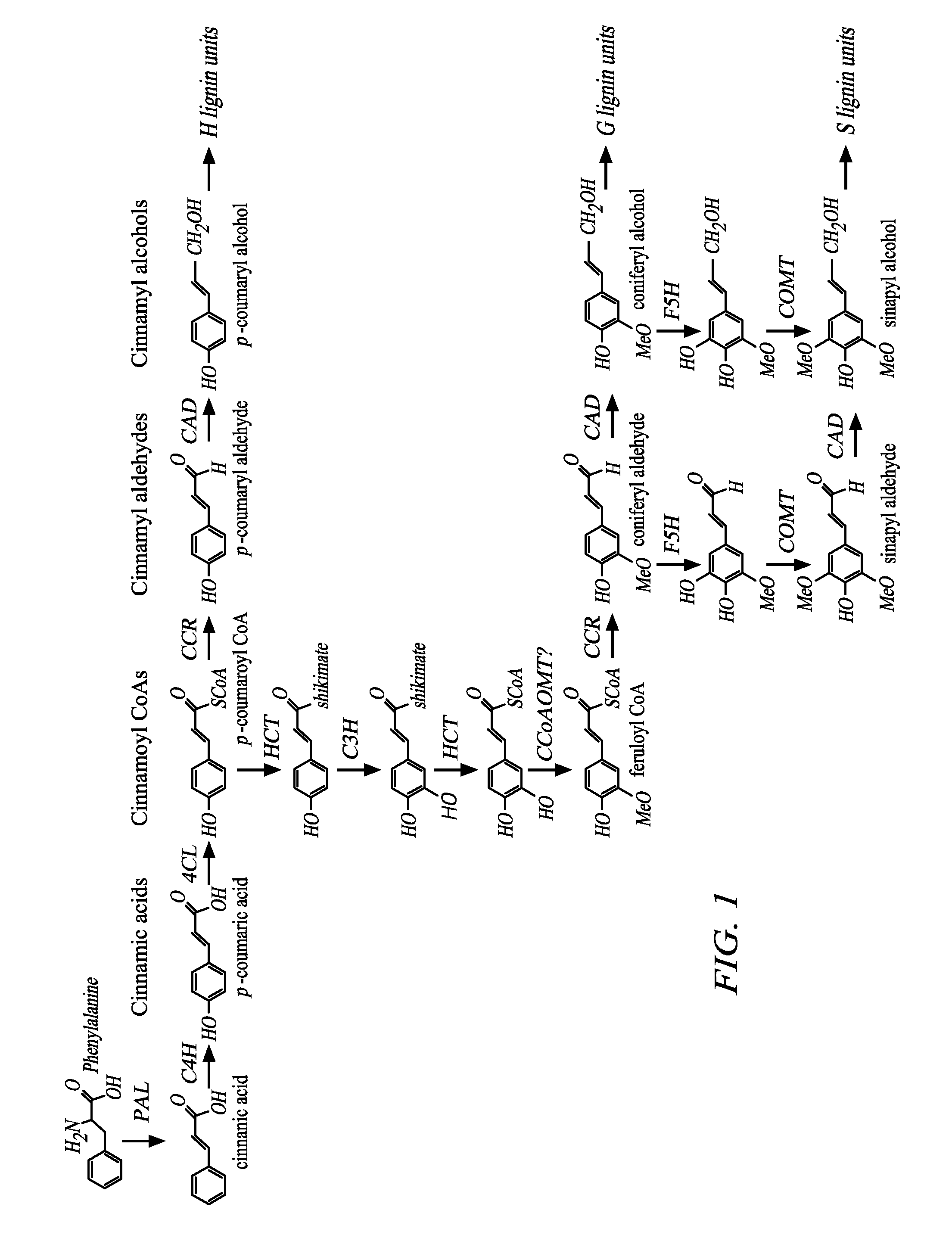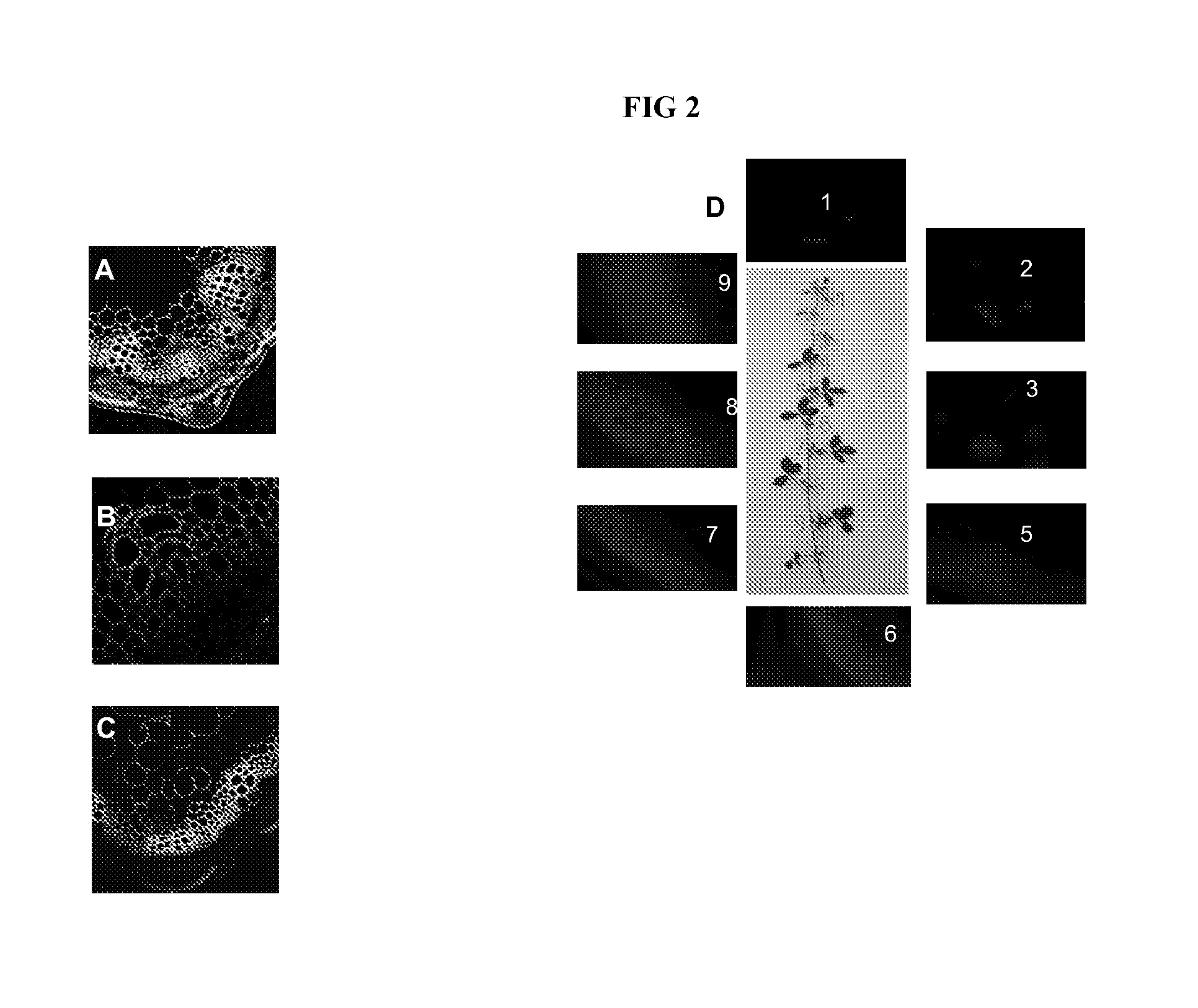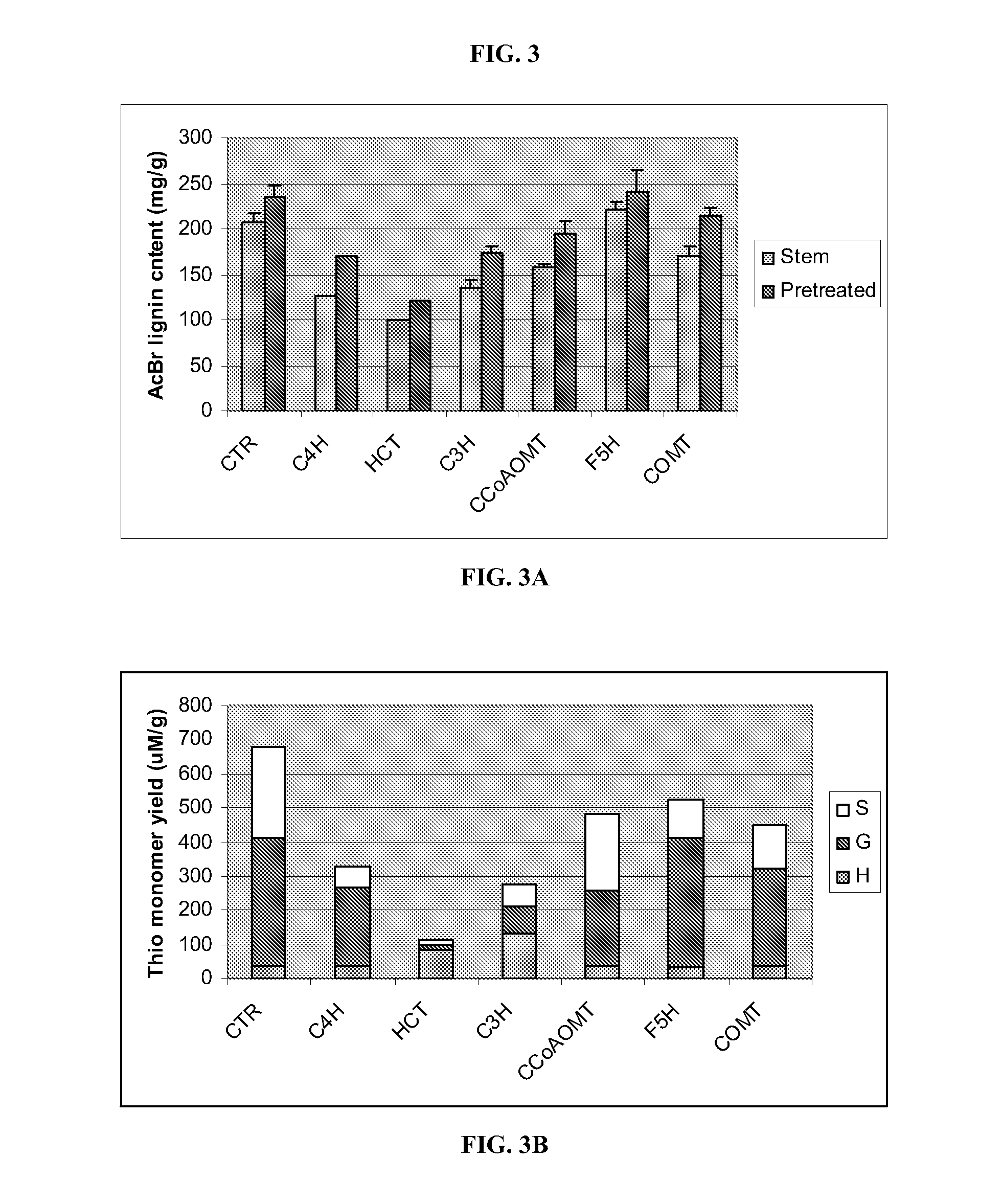Biofuel production methods and compositions
a biofuel and composition technology, applied in the field of agriculture and energy production, can solve the problems of reducing the efficiency of enzymatic hydrolysis of cellulose, affecting the availability of cellulose and hemicellulose as sources of fermentable sugar, and consuming energy in the process, so as to achieve the effect of increasing the number of fermentable carbohydrates
- Summary
- Abstract
- Description
- Claims
- Application Information
AI Technical Summary
Benefits of technology
Problems solved by technology
Method used
Image
Examples
example 1
Effect of Changes in Lignin Content and Composition on Saccharification Efficiency of Pre-Treated and Non Pre-Treated Plant Material
[0180]Dilute acid pretreatment is an effective and inexpensive technology for pretreatment of lignocellulosic biomass in order to make available for fermentation the carbohydrate content (e.g. sugars of cellulose and hemicellulose) of the biomass. The utilization of both cellulose and hemicellulose in lignocellulosic biomass is essential for the economical production of ethanol. Transgenic alfalfa lines down-regulated in enzymes of the lignin biosynthesis pathway (PAL, C4H, HCT, C3H, CCoaOMT, F5H, COMT) were created previously (e.g. Chen et al., 2006; Reddy et al., 2005; Guo et al., 2001; U.S. Patent Publ. 20040049802), were grown, and biomass was harvested. Microscopic analysis including autofluorescence confirmed significant reductions in cellular lignin deposition in selected transgenic lines (FIG. 2, A-D). Milled transgenic or wild-type alfalfa stem...
example 2
Effects of Lignin Modulation on Biomass Yield
[0193]Transgenic alfalfa plants down-regulated in expression of COMT or CCoAOMT have similar biomass yields to control plants (Guo et al., 2001), whereas strongly down-regulating C3H or HCT results in a reduction in overall biomass accompanied, in HCT transgenics, by increased branching (e.g. Reddy et al., 2005) (FIG. 8). The HCT3a line had the lowest biomass at flowering among the materials analyzed here. Biomass (dry weight) reductions of from 18-40% in a series of HCT transgenics including plants with greater lignin reduction than displayed by HCT3a were previously shown (Shadle 2006). A 166% increase in enzymatic hydrolysis efficiency would be required to offset a 40% reduction in overall biomass yield. The increased enzymatic hydrolysis efficiency of approximately 217% in HCT3a therefore reflects a considerable improvement in fermentable glucose production on a per plant basis, even with reduced biomass yield. In the case of the two ...
example 3
Modulation of Monolignol Biosynthesis in Transgenic Grass Plants
[0194]Transgenic grass lines, such as switchgrass, are created which are down-regulated in each of seven enzymes in the monolignol biosynthetic pathway (e.g. FIG. 1). These enzymes are the three cytochrome P450 enzymes of the lignin pathway (cinnamate 4-hydroxylase (C4H); coumarate 3-hydroxylase (C3H); ferulate 5-hydroxylase (F5H)); two O-methyltransferases (COMT and CCoAOMT), as well as L-phenylalanine ammonia-lyase (PAL) and hydroxycinnamoyl CoA: quinate / shikimate hydroxycinnamoyl transferase (HCT). Additional non-limiting targets for down-regulation in order to modify lignin biosynthesis may include aldehyde dehydrogenase (ALDH), monolignol-lignin-specific glycosyltransferase(s), and cinnamyl alcohol dehydrogenase (CAD). Exemplary nucleic acid sequences coding for such enzymes or portions of such enzymes include those from bermudagrass, switchgrass, and tall fescue, such as: bermuda grass C3H (SEQ ID NO:1) and CCOMT ...
PUM
| Property | Measurement | Unit |
|---|---|---|
| temperature | aaaaa | aaaaa |
| temperature | aaaaa | aaaaa |
| temperature | aaaaa | aaaaa |
Abstract
Description
Claims
Application Information
 Login to View More
Login to View More - R&D
- Intellectual Property
- Life Sciences
- Materials
- Tech Scout
- Unparalleled Data Quality
- Higher Quality Content
- 60% Fewer Hallucinations
Browse by: Latest US Patents, China's latest patents, Technical Efficacy Thesaurus, Application Domain, Technology Topic, Popular Technical Reports.
© 2025 PatSnap. All rights reserved.Legal|Privacy policy|Modern Slavery Act Transparency Statement|Sitemap|About US| Contact US: help@patsnap.com



